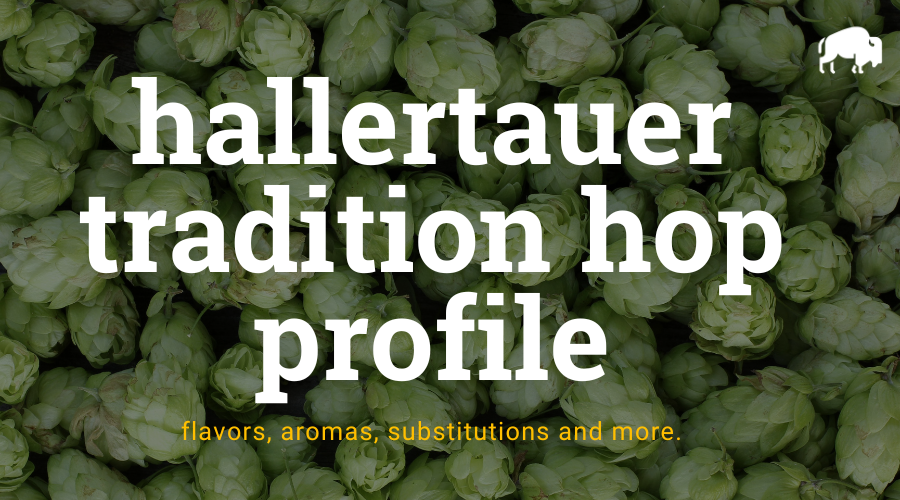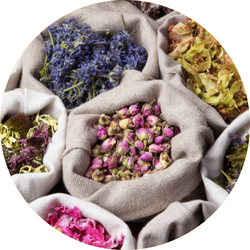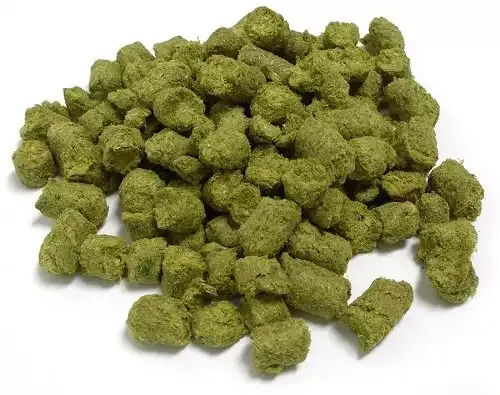
Hallertauer Tradition Hops is a varietal developed in Germany at the Hop Research Institute in Hüll. Released in 1993, they were bred to replicate a Mittelfrüh-style aroma profile while offering improved yield and disease resistance. These hops are primarily used for their aroma and are suitable for traditional German beer styles, such as Munich-style lagers, Oktoberfest, Bock, Weissbier, Kolsch, Altbier, and classic Pilsners. They exhibit a classic Hallertau character, featuring strong herbal and spice components, bright fruit underpinnings, and a complex balance of floral, earthy, and new-mown hay notes.
Hallertauer Tradition is a cross between Hallertauer Gold and 75/15/106M, known for its delicate aroma, average bitter content, good yield, and tolerance to wilt and downy mildew.
| Usage: | Aroma |
| Country of Origin: | Germany |
| Hop Growers Code: | HTR 78/28/16 |
Where To Buy Hallertau Tradition Hops
Hallertau Tradition Flavor And Aroma
Hallertau Tradition is an aroma hop that is often described to have the following aroma characteristics:

floral

grassy

herbal
Hallertau Tradition Hop Oil Breakdown
Hop oils can vary from year to year and farm to farm but based on our research, here are the typical values we have seen reported. This information comes from various hop farms, The Hop Aroma Compendium, and For The Love Of Hops.
| Alpha Acid % (AA) Alpha acids are what is isomerized when boiling to create bitterness in beer. | 4.0% – 7.0% |
| Beta Acid % Beta acids are what give hops their more aroma and flavor compounds. | 3.0% – 6.0% |
| Alpha-Beta Ratio This ratio of alpha acids to beta acids determines how quickly bitterness fades during aging. Lower ratios are common for aromatic varieties. | 1:1 – 2:1 |
| Co-Humulone as a % of Alpha Higher numbers are said to impart a harsher bitterness. | 24% – 30% |
| Total Oils (mL/100g) With more total oils, typically comes a more complex hop profile but these are highly volatile compounds. | 0.5mL – 1.0mL |
| Myrcene green, resinous | 17% – 32% |
| Humulene woody, piney | 35% – 50% |
| Caryophyllene woody | 10% – 15% |
| Farnesene floral | 0% – 1% |
| Other Oils: Includes beta-ionine, beta-pinene, limonene, linalool, geranoil & selinene | 2% – 38% |
| Hop Storage Index (HSI) The HSI indicates the percent of alpha and beta acids lost after 6 months of storage at room temperature (68°F or 20°C). | Retains 65%-70% alpha acid after 6 months storage at 20ºC (68ºF). |
| Hop Storage Index (HSI) Rating | Fair – Good |
Hallertau Tradition Hop Substitutions
Replacing one hop for another is seldom straightforward but sometimes you don’t have the right hop or the right quantity of hops for the beer you want to make. For those situations, we have made a comprehensive list of hops to substitute on brew day.
These substitutions aren’t perfect as hop chemistry is pretty complex.
We wanted to make this list of substitutions with varietals that are easy to find when possible. For Hallertau Tradition, we recommend substituting with the following hops:
Beer Styles
For the most part, any hop could have a place in just about any beer style. Based on popular beers, historical usage, and our own preferences, we would recommend using Hallertau Tradition for IPA, New England IPA, Pale Ale, Wheat Beer, Golden Ale. That being said, experiment and see what works best for you.
References
https://www.hopslist.com/
https://www.ars.usda.gov/
https://www.brewersassociation.org/
https://www.barthhaasx.com/
https://www.yakimachief.com/
Hieronymus, Stan. For The Love of Hops. Brewers Publications, 2012
The Hop Aroma Compendium. 2012


